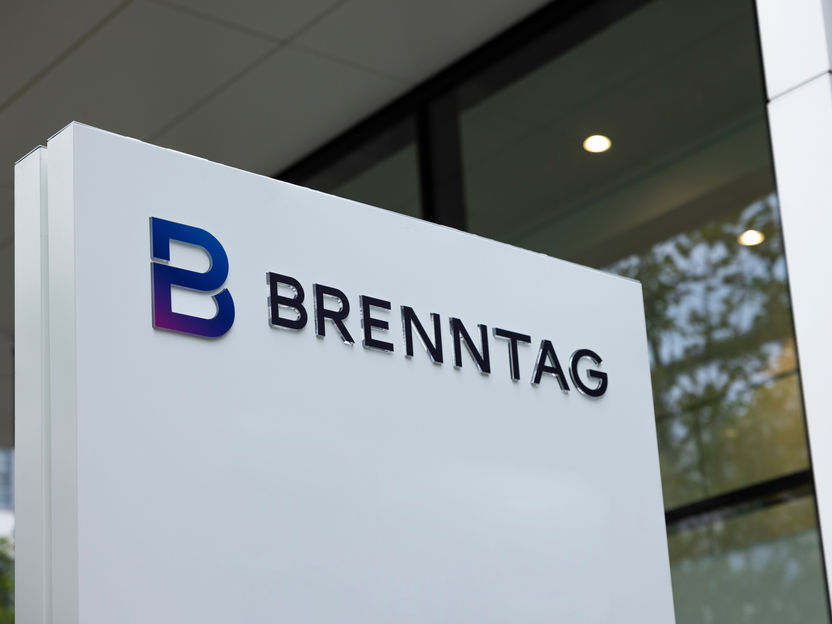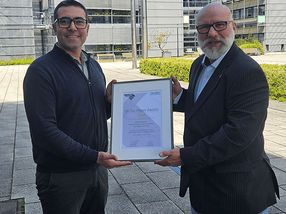Green hydrogen: MXene boosts the effectiveness of catalysts
Promising path to a new class of catalysts
MXenes are adept at hosting catalytically active particles. This property can be exploited to create more potent catalyst materials that significantly accelerate and enhance the oxygen evolution reaction, which is one of the bottlenecks in the production of green hydrogen via electrolysis using solar or wind power. A detailed study by an international team led by HZB chemist Michelle Browne shows the potential of these new materials for future large-scale applications. The study is published in Advanced Functional Materials.
Green hydrogen is set to play an important role in the future energy system: it can be used for storing chemical energy, as a raw material for the chemical industry, and for producing climate-friendly fuels. Green hydrogen can be generated in a nearly climate-neutral manner if the energy used for electrolysis — the process of splitting water into its elements — comes from solar or wind power. However, special catalysts are needed to speed up the formation of hydrogen and oxygen at the two electrodes. In particular, the oxygen evolution reaction is sluggish and would require significantly more energy without effective catalysts. Currently, such catalysts are made from precious metals, which are rare and expensive. For green hydrogen to be produced in the required quantities at a reasonable price, catalysts made from readily available elements are needed.
Flaky structures
At HZB, a team led by Michelle Browne is developing sophisticated alternatives based on so-called MXenes. MXenes are flaky structures made of carbon and so-called transition metals. Catalytically active particles can adhere to the inner surfaces of MXenes, thereby enhancing their catalytic effect. A new study in the journal Advanced Functional Materials now shows that this idea works.
The study's first author, Can Kaplan, used different variants of a vanadium carbide MXene as the basis for his research. He took the opportunity to conduct research at the laboratory of the Swedish partners at Linköping University during his PhD, as part of an exchange programme during his PhD.
The role of vacancies
“There, we synthesised two MXene variants: pure V2CTx and V1.8CTx with 10% vanadium vacancies. These vanadium vacancies ensure that the internal surface area of this variant is significantly larger,” explains Can Kaplan.
Embedding CoFe into MXene
In Michelle Browne's HZB laboratory, Kaplan developed a multi-step chemical process to embed Co0.66Fe0.34 catalyst particles into the MXene. Images taken with a scanning electron microscope show that this was successful; the pure MXenes have a pastry-like structure, but this changed significantly due to the incorporation of the cobalt-iron particles.
Best efficiency: CoFe in the vanadium deficient MXene
The team then investigated the effect of the different catalyst samples in use during electrolysis: pure iron-cobalt, and mixed with one of the two MXene variants. The results were very clear: also pure iron-cobalt compound acts as a catalyst. However, when embedded in MXene, the catalytic effect increased significantly. And the efficiency is further enhanced when the iron-cobalt compound is embedded in MXene with numerous vacancies.
Using in situ X-ray absorption spectroscopy at the SOLEIL synchrotron source in France, the team was able to track changes in the oxidation numbers of cobalt and iron during the electrolytic reaction.
Promising path to a new class of catalysts
‘We tested these catalysts on both a laboratory scale and in a much larger electrolyser,’ emphasises Kaplan. ‘This makes our results really meaningful and interesting for industrial applications.’
‘Currently, the industry has not yet considered MXene as a carrier material for catalytically active particles on the radar,’ says Michelle Browne. ‘We are conducting basic research here, but with clear prospects: on applications. Our results have now provided initial insights into the complex interplay between the carrier structure, the embedding of catalytically active particles and catalytic activity.’ MXene is a promising candidate for the development of innovative, highly efficient and inexpensive catalysts, Michelle Browne concludes.
Original publication
Can Kaplan, Karuppasamy Dharmaraj, Thorsten Schultz, Leiqiang Qin, Ningjun Chen, Danielle A. Douglas‐Henry, Bastian Schmiedecke, Merve Buldu‐Akturk, Axel Zuber, Iris Dorbandt, Maximilian Reinhardt, Yael Rodriguez‐Ayllon, Yan Lu, Valeria Nicolosi, Norbert Koch, Johanna Rosen, Michelle P. Browne; "Enhancing CoFe Catalysts with V2CTX MXene‐Derived Materials for Anion Exchange Membrane Electrolyzers"; Advanced Functional Materials, 2025-5-15
Most read news
Original publication
Can Kaplan, Karuppasamy Dharmaraj, Thorsten Schultz, Leiqiang Qin, Ningjun Chen, Danielle A. Douglas‐Henry, Bastian Schmiedecke, Merve Buldu‐Akturk, Axel Zuber, Iris Dorbandt, Maximilian Reinhardt, Yael Rodriguez‐Ayllon, Yan Lu, Valeria Nicolosi, Norbert Koch, Johanna Rosen, Michelle P. Browne; "Enhancing CoFe Catalysts with V2CTX MXene‐Derived Materials for Anion Exchange Membrane Electrolyzers"; Advanced Functional Materials, 2025-5-15
Organizations
Other news from the department science

Get the chemical industry in your inbox
By submitting this form you agree that LUMITOS AG will send you the newsletter(s) selected above by email. Your data will not be passed on to third parties. Your data will be stored and processed in accordance with our data protection regulations. LUMITOS may contact you by email for the purpose of advertising or market and opinion surveys. You can revoke your consent at any time without giving reasons to LUMITOS AG, Ernst-Augustin-Str. 2, 12489 Berlin, Germany or by e-mail at revoke@lumitos.com with effect for the future. In addition, each email contains a link to unsubscribe from the corresponding newsletter.
Most read news
More news from our other portals
Last viewed contents

Solving two battery challenges with one atom-scale catalyst - “This work is significant because it solves two long-standing problems in lithium–oxygen batteries using a single material”
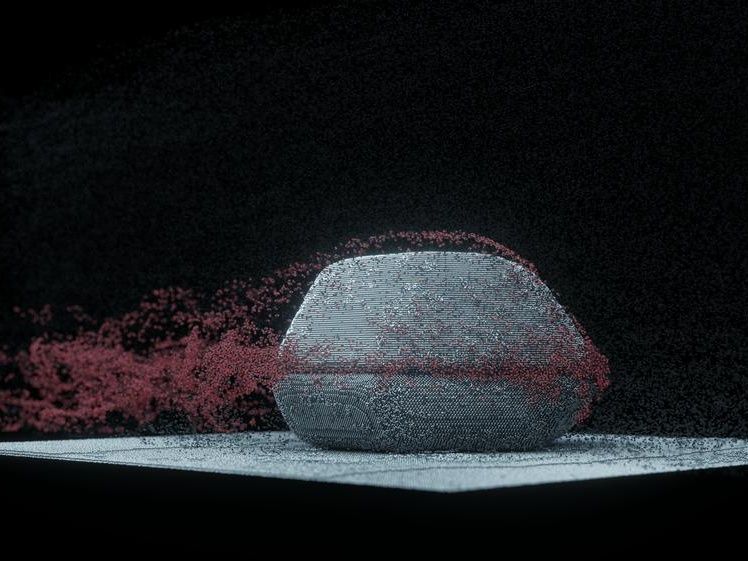
Nanoburgers with promising flaws - DESY team finds surprising defects in tiny metal particles, which could stimulate the development of more efficient catalysts

Zinc–iodine battery with outstanding stability now a reality
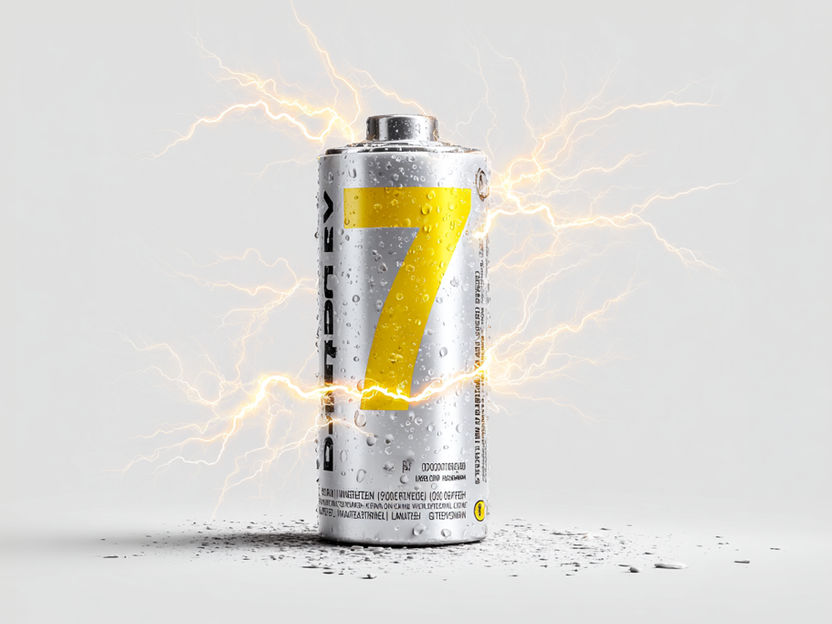
Sevenfold boost in lifespan of anode-free all-solid-state batteries using MoS₂ thin films - Employing cost-effective MoS₂ thin films in place of expensive noble metals resolves issues of non-uniform lithium plating and interfacial instability in anode-free all-solid-state batteries
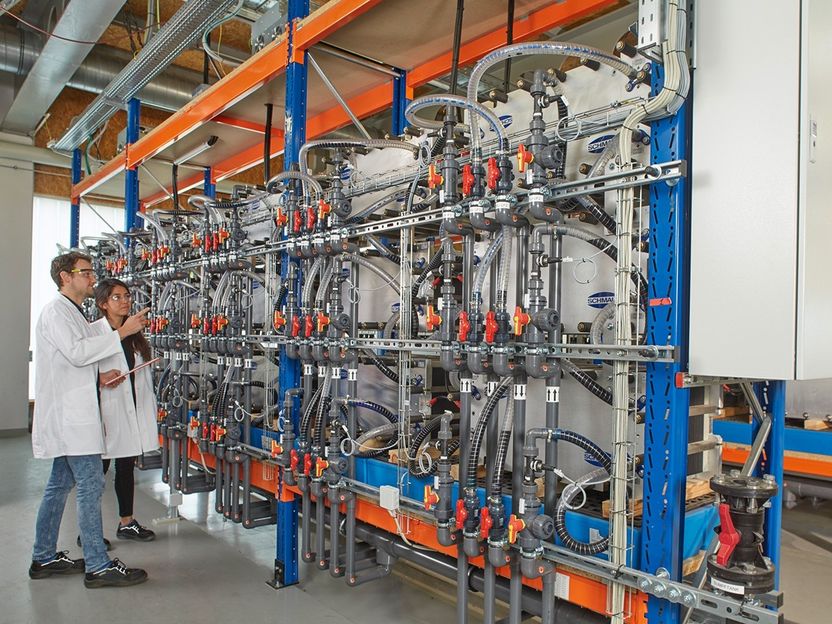
Renewable energy stored in a large-scale battery is introduced into the power grid on demand - Successful start to test operation at Fraunhofer ICT

New method to study catalysts could lead to better batteries - A new algorithm opens the door for using artificial intelligence and machine learning to study the interactions that happen on the surface of materials
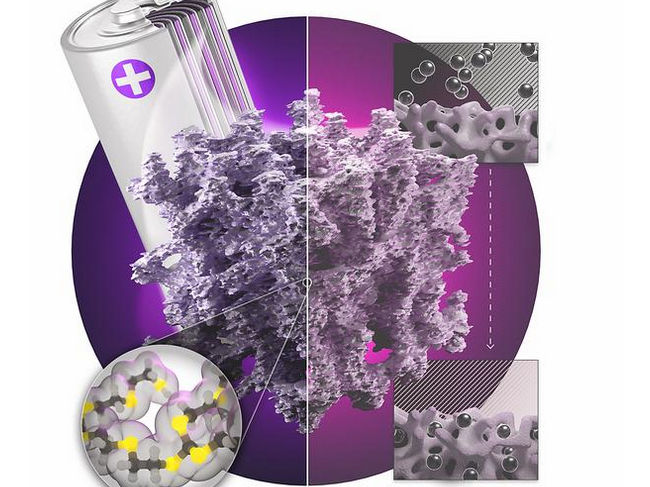
Versatile new polymer material - Highly efficient metal catcher and building block for environmentally friendly batteries

High-throughput screening, synthesis and characterization of active materials for flow batteries - International research network »PREDICTOR« aims to establish rapid, high-throughput methods to identify and develop materials for electrochemical energy storage

LUMITOS Celebrates Anniversary – From University Vision to Leading B2B Online Marketing Expert - Organic Growth Instead of Venture Capital: How LUMITOS Survived the Dot-com Crisis and Became Market Leader

Thyssenkrupp nucera Signs an Agreement to Acquire Key Technology Assets from Green Hydrogen Systems

Saint-Gobain acquires Maturix
